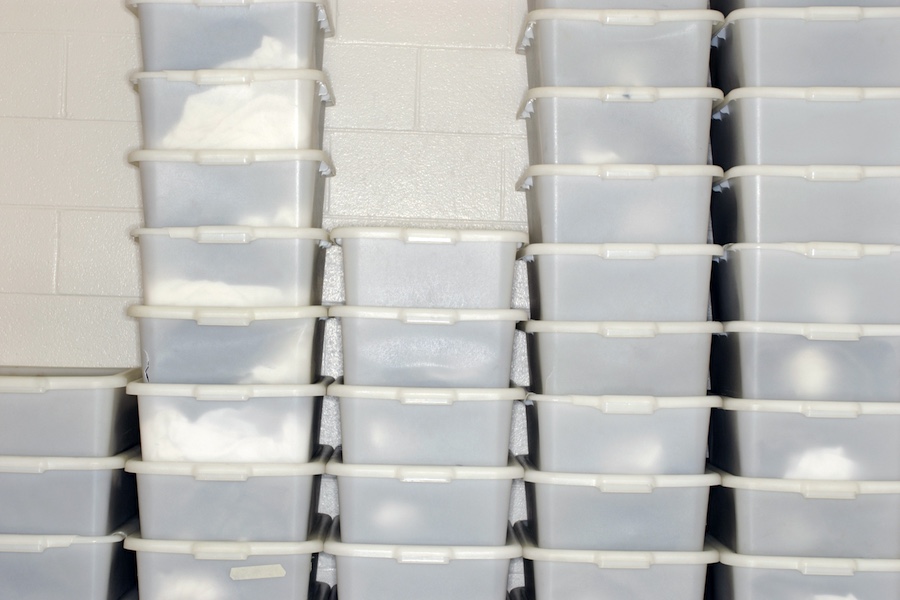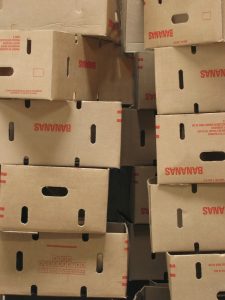Boxes VS Plastic – Our take on storing things in plastic containers
When it comes to keeping your belongings organised and protected, few storage options are as popular as plastic containers. From clothes and toys to books and keepsakes, these sturdy boxes can make decluttering or long-term storage easy and efficient. Whether you’re storing things in plastic containers in a loft, basement, or a storage facility like Big Box Self Storage, it’s important to understand both the benefits and the potential drawbacks before sealing the lid.

The Pros:
1. Durable and Long-Lasting
Plastic containers are designed to withstand the test of time. Unlike cardboard boxes, they don’t weaken when exposed to moisture or fluctuating temperatures. This makes them ideal for environments such as lofts or basements, where humidity can sometimes be an issue. Their rigidity also protects your belongings from being crushed when stacked.
2. Protection from Moisture and Dust
One of the biggest advantages of using plastic containers is their ability to seal tightly. A well-fitted lid helps keep out dust, dirt, insects, and—most importantly—moisture. For items like clothing, books, or toys, this level of protection can be invaluable. When storing things in plastic containers inside a storage unit, you’re creating an added barrier against the elements.
3. Easy to Stack and Label
Organisation is simple with plastic storage tubs. Their uniform shape makes them easy to stack safely, saving valuable space in a storage unit or at home. Transparent boxes also let you see what’s inside without opening each one, while label-friendly surfaces help you identify contents at a glance. At Big Box Self Storage, this makes retrieval quick and stress-free.
4. Reusable and Eco-Friendly (When Used Long-Term)
Although plastic often gets a bad reputation for being non-biodegradable, using durable containers multiple times is an eco-friendly choice compared to constantly replacing flimsy boxes. If you invest in quality containers and reuse them over the years, you’ll be reducing waste and getting excellent value for money.
5. Great for Transport
If you’re moving or reorganising your storage unit, plastic containers are easy to handle and transport. Their rigid shape keeps items secure, and many have handles or wheels for added convenience. They’re less likely to tear or collapse compared to cardboard alternatives, giving you peace of mind during a move.
The Cons
1. Can Trap Moisture Inside
While plastic containers keep moisture out, they can also trap it in if you’re not careful. Storing damp clothes, books, or paper products can lead to mould or mildew inside the container. To prevent this, always ensure items are completely dry before sealing the lid. Consider adding silica gel packs or moisture absorbers when storing things in plastic containers for long periods.
2. Not Ideal for Extreme Heat
Plastic can warp or become brittle when exposed to high temperatures over time. If your loft or garage experiences extreme heat during the summer, it may not be the best environment for plastic storage. For sensitive items like photos, vinyl records, or delicate fabrics, a ventilated self-storage unit – like those at Big Box is a much safer option.
3. Limited Breathability
Unlike cardboard or fabric bins, plastic containers don’t allow air circulation. This can cause natural fibres like cotton or wool to develop musty smells if stored for months or years. To combat this, use breathable garment bags or add ventilation holes (if appropriate for the contents).
4. Can Become Bulky or Costly
Plastic containers are more expensive upfront than cardboard boxes, and their rigid structure can take up more room when empty. If you’re storing large quantities of small or irregular items, flexible storage bags or vacuum-sealed options might make better use of space.
5. Environmental Considerations
While reusable, plastic containers are still made from petroleum-based materials. Choosing high-quality, recyclable plastics and reusing them for years helps offset this impact. When they eventually reach the end of their life, make sure to recycle them responsibly.
Best Practices for Storing Things in Plastic Containers
- Always clean and dry items before packing.
- Use silica gel or moisture absorbers for extra protection.
- Label containers clearly for easy access later.
- Don’t overpack—allow enough space for lids to seal properly.
- Store in a cool, dry, and ventilated environment whenever possible.
Final Thoughts

Storing things in plastic containers can be a smart, durable, and convenient choice for protecting your belongings, especially when paired with a clean, air-ventilated storage unit at Big Box Self Storage. By understanding both the pros and cons, you can make informed decisions about what to store and how to do it safely. With environmental factors a huge part of our world today, we highly recommend the use of cardboard boxes. Our Box Shop team can support your needs there – reach out to the Box Shop.
Whether you’re decluttering your home, moving house, or simply making more space, the right storage setup will keep your items protected and organised for years to come.




